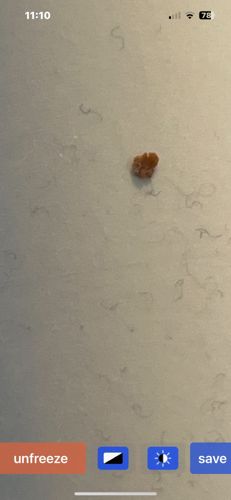Case-bearing Clothes Moth (or Plaster Bagworm)
Scientific Name: Phereoeca uterella (or Tinea pellionella for Common Clothes Moth, which is similar in appearance and behavior but the case morphology in the image strongly suggests Phereoeca uterella due to its flattened, seed-like appearance)
Order & Family: Lepidoptera, Tineidae
Size: Larvae can be up to 10-15 mm (0.4-0.6 inches) long, including their case. Adult moths have a wingspan of 9-16 mm (0.35-0.63 inches).

Natural Habitat
Indoors, in areas with natural fibers or dust and debris, such as closets, attics, storage areas, under furniture, and undisturbed corners of rooms.
Diet & Feeding
Keratin-containing materials such as wool, fur, feathers, hair, lint, and sometimes synthetic fibers if mixed with natural ones. Also feeds on cobwebs or dead insects.
Behavior Patterns
Larvae construct a case from silk and debris (like lint, carpet fibers, and hair) and carry it with them. They are slow-moving and often found in dark, undisturbed areas. Adults are small moths that are not very strong fliers and are typically nocturnal.
Risks & Benefits
Potential risks include damage to clothing, carpets, upholstered furniture, and stored natural fiber products. They typically do not bite or transmit diseases. There are no known significant benefits to humans from their presence indoors, only as part of their natural ecosystem.
Identified on: 8/27/2025